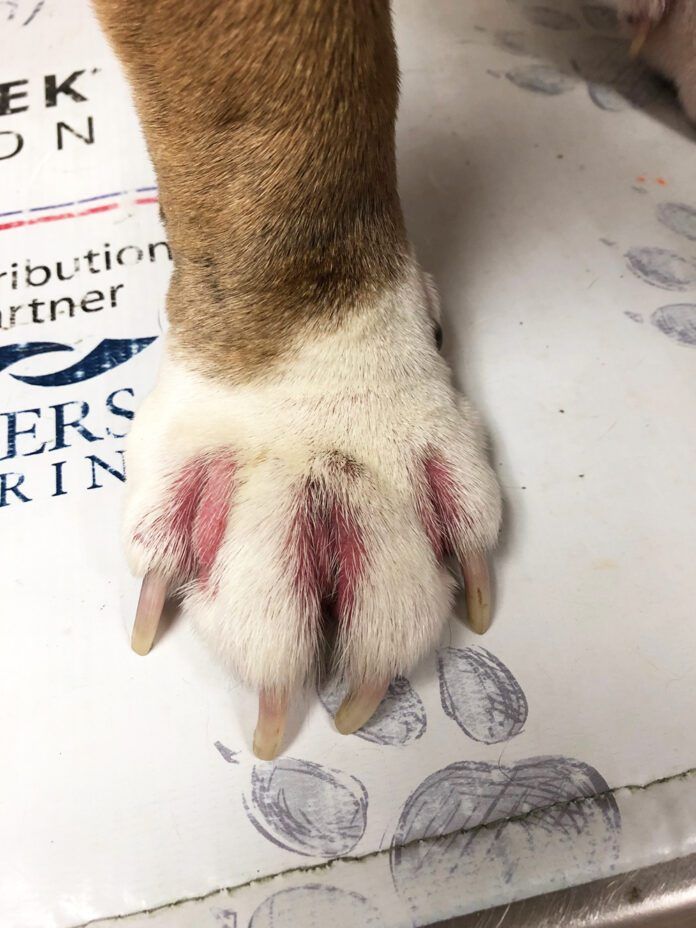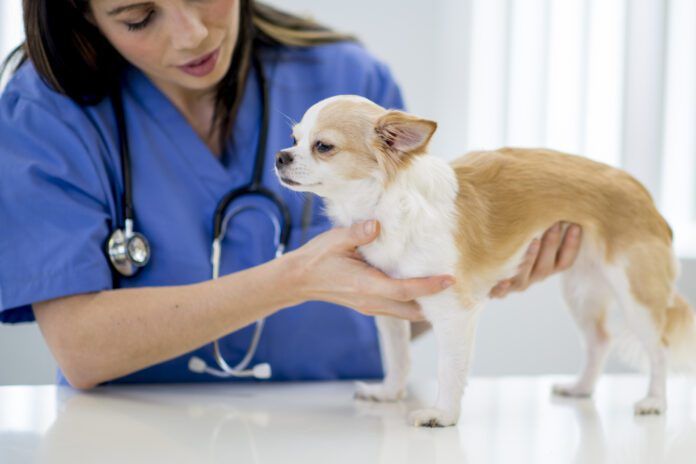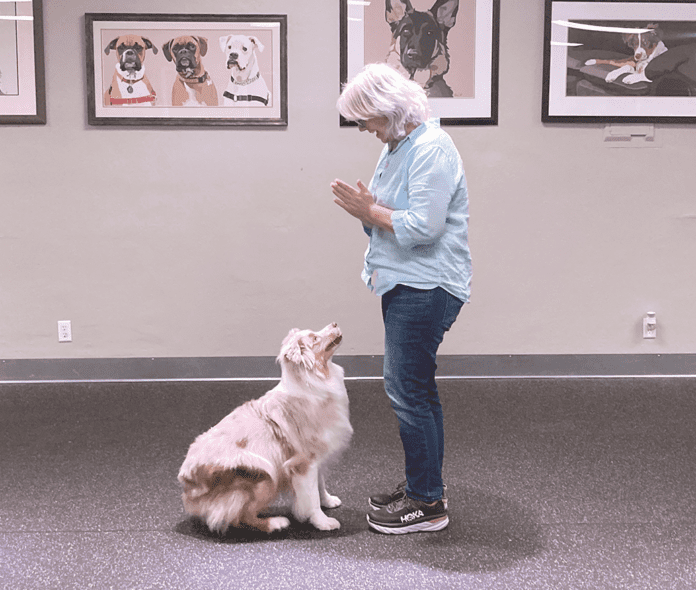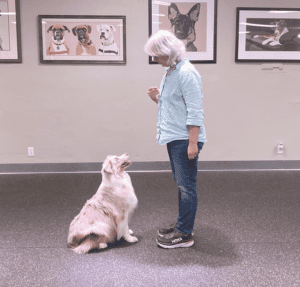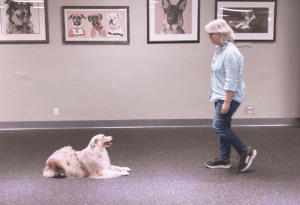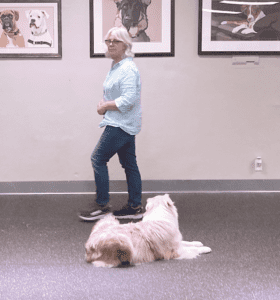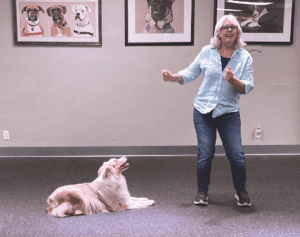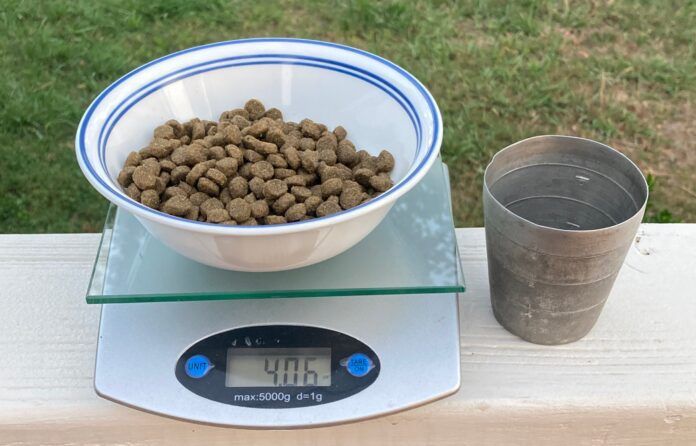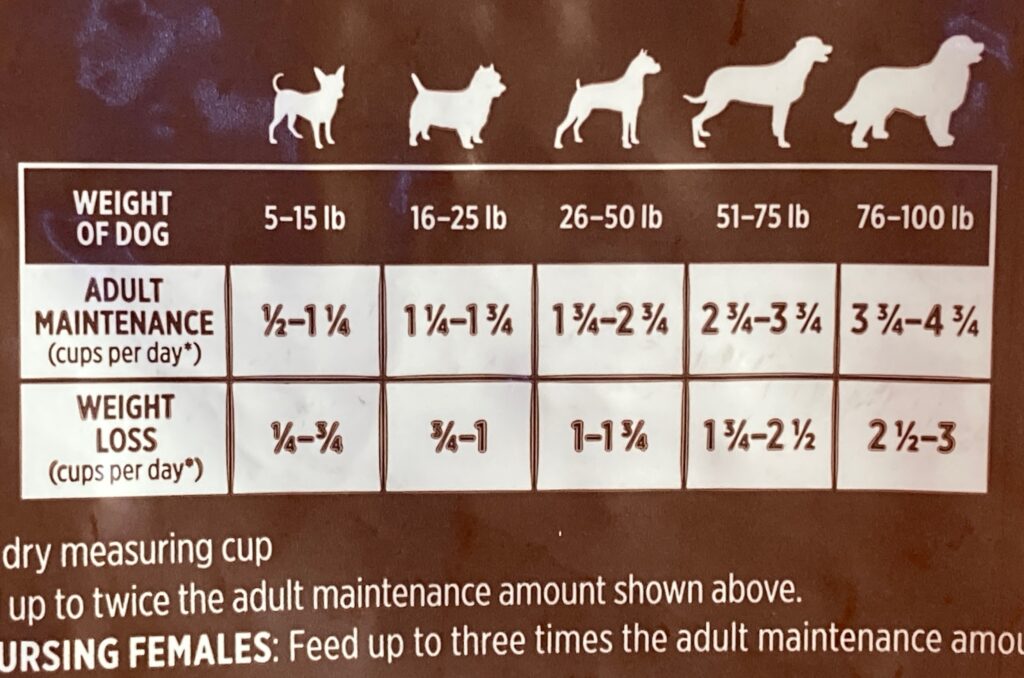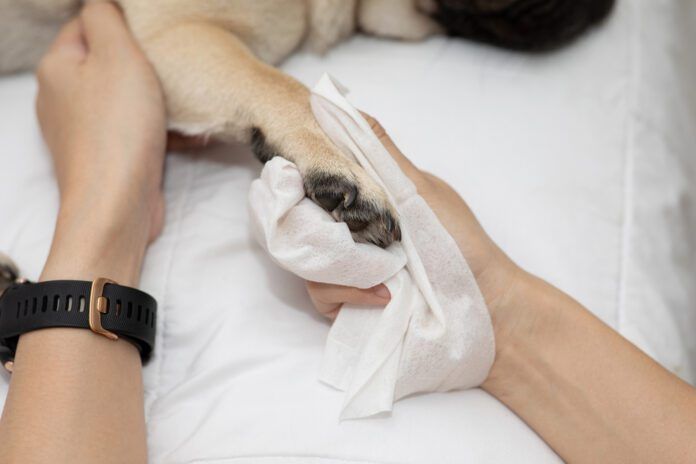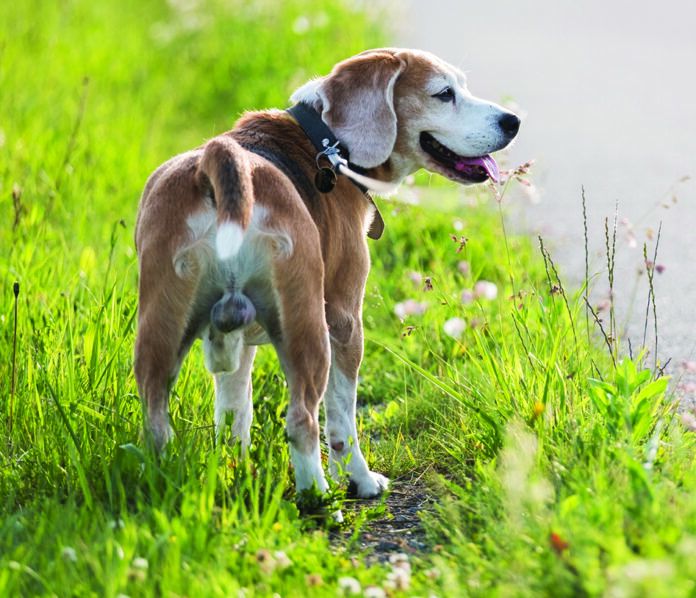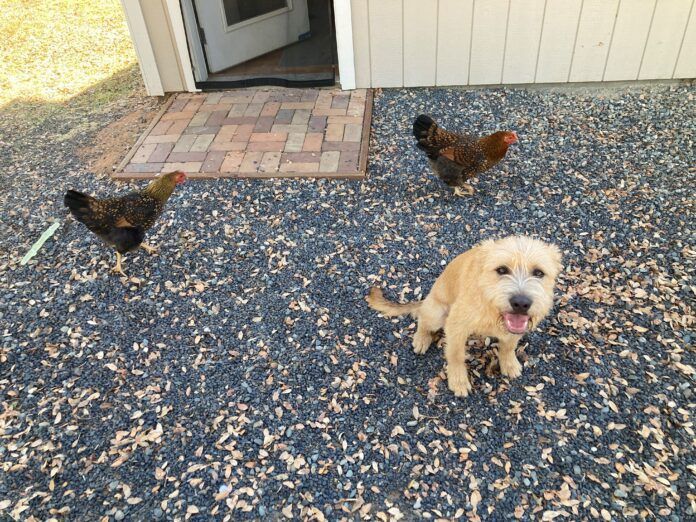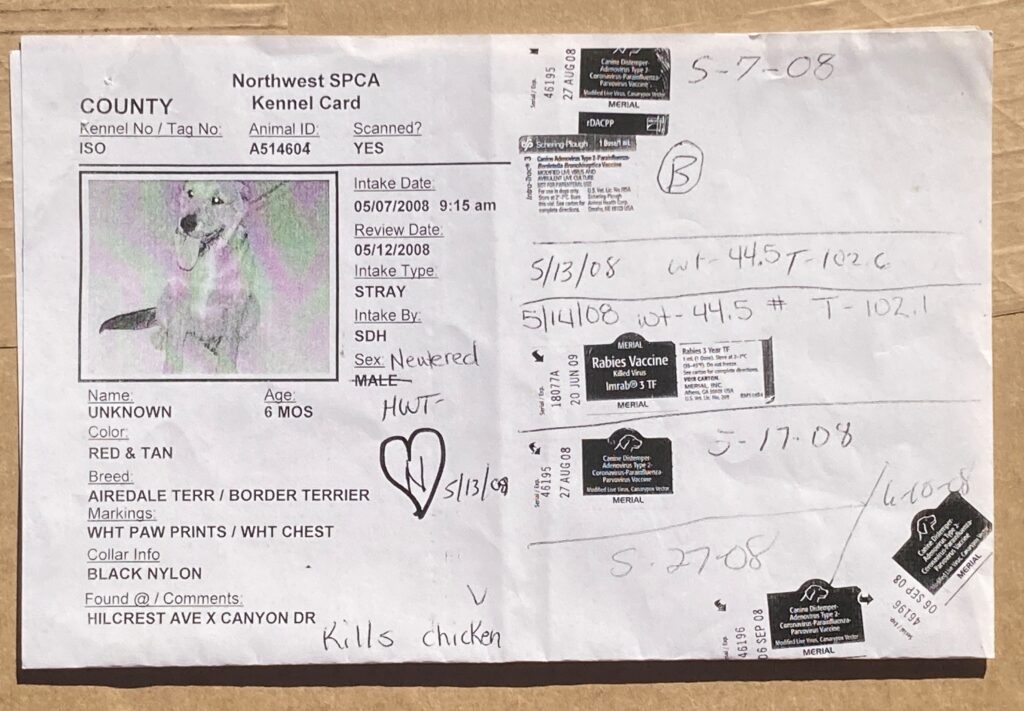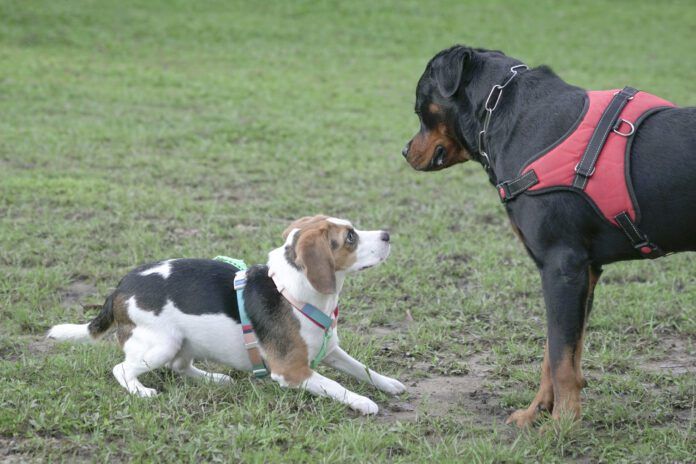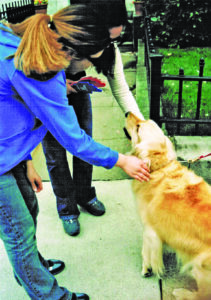When your dog’s paws seem to be severely itchy – so much that he wakes you every night with slurping sounds as he endlessly licks his paws – and the skin between his toes is red and inflammed, he’s likely suffering from a condition known as pruritic pododermatitis. Pruritic means to be itchy, podo refers to feet or paws, and dermatitis is inflammation of the skin.
There are a few causes of pruritic pododermatitis:
- Demodex mites
- Hookworm infection
- Canine atopic dermatitis (hypersensitivity, i.e., allergy)
- Malassezia dermatitis (yeast overgrowth)
While many owners are tempted to try home remedies for their dogs’ itchy paws, it’s best to have your dog seen by a veterinarian so the root cause can be treated and resolved. If only the symptom is addressed, the problem will recur again and again, putting the dog through needless distress and discomfort.
Here’s how the most common causes of pododermatitis are diagnosed and treated:
Dealing with Demodex
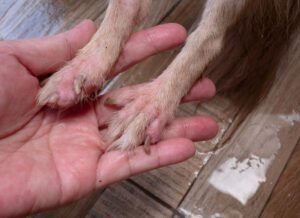
- Ivermectin (an oral medication)
- Milbemycin (found in several heartworm preventatives)
- Moxidectin (found in some topical flea preventatives)
- The fluralaner class of drugs (found in several oral flea/tick preventatives)
Hookworm

Hookworm can also cause pruritic pododermatitis. We often think of hookworm as being an intestinal parasite. Puppies can get hookworms from their infected mothers when they are in utero, or from their infected mother’s milk. Hookworm eggs are shed from an infected dog in its feces. The eggs develop into larvae, which infect other dogs when they are swallowed (often when the dog is grooming himself) or penetrating the dog’s skin, typically the underside of the webbing between the dog’s toes. When it penetrates the skin, hookworm causes an intense pruritus.
This parasite can be treated with several different anthelmintics (dewormers), including fenbendazole, milbemycin oxime, moxidectin, and pyrantel pamoate.
Canine Atopic Dermatitis (CAD, a.k.a. Allergy)

Pic for Demodex: https://www.gettyim
Treating CAD with Medications
Addressing CAD Through Diet
Immunotherapy Treatment for CAD
Bacterial and Yeast Infection that Cause Pododermatitis in Dogs
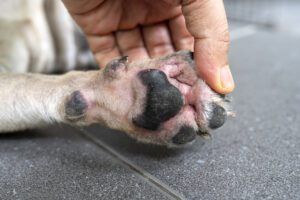
Another common cause of pruritic pododermatitis is caused by an overgrowth of a yeast called Malassezia pachydermatis. Your dog’s skin naturally has yeast and bacteria growing on its surface. This population of yeast and bacteria is called the normal skin flora. It is part of the skin’s immune system and keeps yeast and bacteria from growing on the skin surface that can cause your dog harm. An infection with Malassezia is often secondary to another underlying skin condition, so it is important to complete a diagnostic workup with your dog’s veterinarian.
Pyoderma is a bacterial skin infection that can cause itchiness of your dog’s paws. Pyoderma can either be superficial or deep. Superficial pyoderma is often caused by an overgrowth of the normal flora on your dog’s skin surface but can be caused by other bacteria that are not part of the skin flora. Deep pyoderma is a bacterial infection that is within the layers of skin. Diagnosing the cause of deep pyoderma may require obtaining a small biopsy sample of the affected skin. The skin sample is submitted to a laboratory for a bacterial culture and sensitivity to identify the bacteria and the appropriate antibiotic.
Like Malassezia dermatitis, pyoderma is often secondary to another underlying skin condition. Both Malassezia dermatitis and superficial pyoderma can be treated with a combination of medicated shampoos and oral medications. Deep pyoderma typically requires a several week course of one or more antibiotics.
There is another cause of seriously itchy paws that is much less common than mites, hookworm, allergies, and yeast: chronic inflammatory pododermatitis. Dogs with this condition may have small swellings between their toes that rupture and drain. The underlying cause of chronic inflammatory pododermatitis is not known, but is thought to be more prevalent in dogs with carpal valgus (front paws that turn outward) and those with a deep bacterial infection of the skin or an immunosuppressive disorder. Treatment is aimed at identifying and treating the underlying cause of the condition.
Don’t Wait; See a Vet!
Itchy paws are annoying for both you and your dog, but appropriate solutions will provide relief. Make an appointment with your dog’s veterinarian to determine the underlying cause and start down the path toward itch-free paws.


